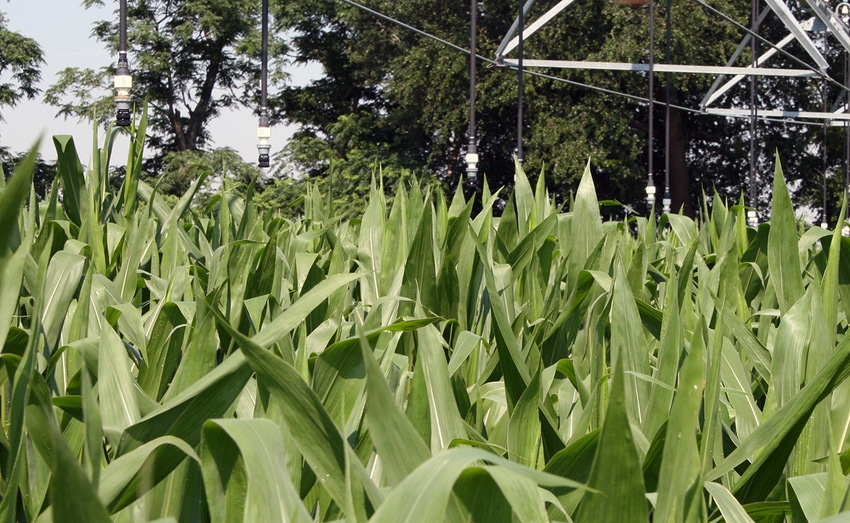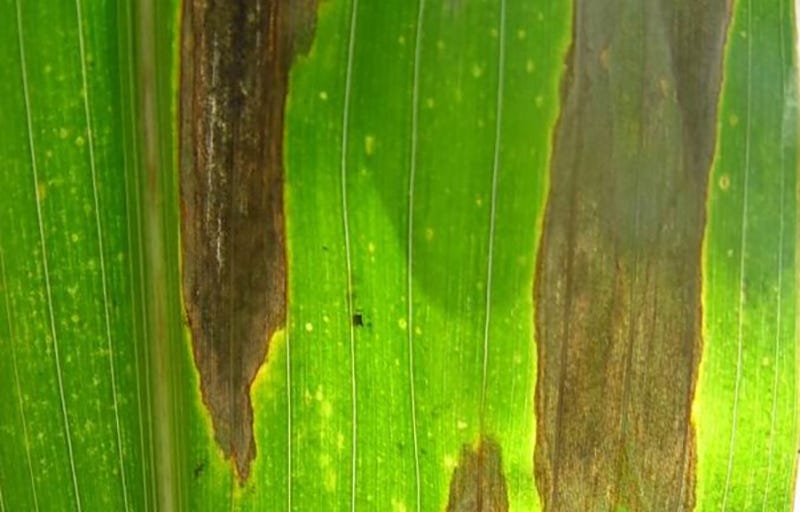
Midwestern farmers may not give much thought to fungicides prior to tasseling. Corn growers in the South don’t have that luxury and should weigh options much earlier. Southern corn is afflicted by many diseases, and several often threaten yield and profit.
While you should be aware of any diseases in your fields, southern corn rust, northern corn leaf blight and southern corn leaf blight are the greatest threats in the South.
Not every corn grower in Georgia and in the southeastern United States will need to protect every acre in 2020 with a fungicide. However, given the potential for losses to diseases, growers should keep their finger on the trigger, primed for a timely fungicide application. If risk to disease is low during the season, then growers can ease their finger off the trigger.
As recently as 2003, University of Georgia Extension had only vague recommendations for use of fungicides on corn. The inadequacy of vague recommendations became clear when Mr. Pierre Brueder, a Georgia corn grower, challenged us to “show him the data." Embarrassingly, there really wasn’t much data. Too add insult to injury, a study conducted on his farm that summer clearly showed fungicides and the number of applications mattered.
New Fungicides
Since Pierre Brueder “took me to school," a number of advancements in disease management on corn have occurred. Since 2003, we have further documented yield losses not only to southern corn rust, but to northern corn leaf blight and southern corn leaf blight as well. Also, new fungicides have become available.
The profit margin on corn is often razor-thin. Because of this, I tell corn producers, “If you are aiming for high yields and are investing in seed, fertilizer, herbicides, insecticide, and irrigation, why wouldn’t you also consider a fungicide program to protect your investments?”

In the South, applications made at tassel may be effective for southern corn rust but may be too late for northern and southern corn leaf blights. Northern corn blight pictured. Photo courtesy Bob Kemerait.
UGA Extension doesn’t have a blanket recommendation for corn growers as far as to spray or not to spray. Recommendations for use of fungicides on a corn are based on these factors:
Is the corn irrigated? Irrigated corn not only has greater yield potential but is often more susceptible to disease. Irrigated corn more often profits from use of a fungicide than does non-irrigated corn.
Crop rotation and tillage significantly impact disease risk. Corn planted in tighter rotations, especially under conservation tillage, increases risk to diseases like southern and northern corn leaf blights and gray leaf spot because these fungi can survive in the crop residue. Southern corn rust is not affected by tillage or rotation.
Planting date can have a significant impact on risk to disease, especially to southern corn rust. Because southern corn rust does not survive in crop debris, it must be reintroduced every year. Early-planted corn may “beat” the return of the rust and “escape” the most severe impact.
Is the variety you planted more resistant or more susceptible to leaf blights and gray mold?
Tasseling Target
I recently participated in a series of education programs targeting Midwestern growers regarding use of fungicides on corn. I was joined on the panels by new friends “Jim from Illinois," and “Levi from Nebraska,” and a number of growers to whom “corn and soybeans” are what “cotton and peanuts” are to us. For these farmers, tasseling is THE target for a fungicide application. I explained that while tasseling is important, it is not the ONLY important timing for southern corn growers.
In the South, applications made at tassel may be effective for southern corn rust but may be too late for northern and southern corn leaf blights. If growers need to protect against the blights, fungicide applications may need to be initiated as early as the V8-V10 growth stages to be effective.
In the study done with Pierre Brueder, former UGA Extension agent Will Duffie and I tested Stratego and Quadris. Later, “Headline AMP” became a standard against which I compared other fungicides. Corn growers today can choose from newer fungicides to include Veltyma, Trivapro, Miravis Neo, Delaro, Aproach Prima, and Lucento in the battle to protect yields. Advantages in selecting the “best” fungicide include:
Better control of diseases.
Longer protective window (i.e., how long it lasts before it must be reapplied).
Flexibility of application timing, and, of course.
Cost.
My new buddies, Jim and Levi shared with Midwestern farmers their experiences for the value of including a versatile fungicide in an overall production plan. While I certainly wasn’t going to tell them how to grow corn, I also wasn’t going to apologize for aggressive use of fungicides in the South. When risk to disease is high, a timely application of an effective fungicide can protect as much as 80 bushels to 90 bushels per acre. And to quote Hank Williams Jr., “That’s how they do it in Dixie."
About the Author(s)
You May Also Like






